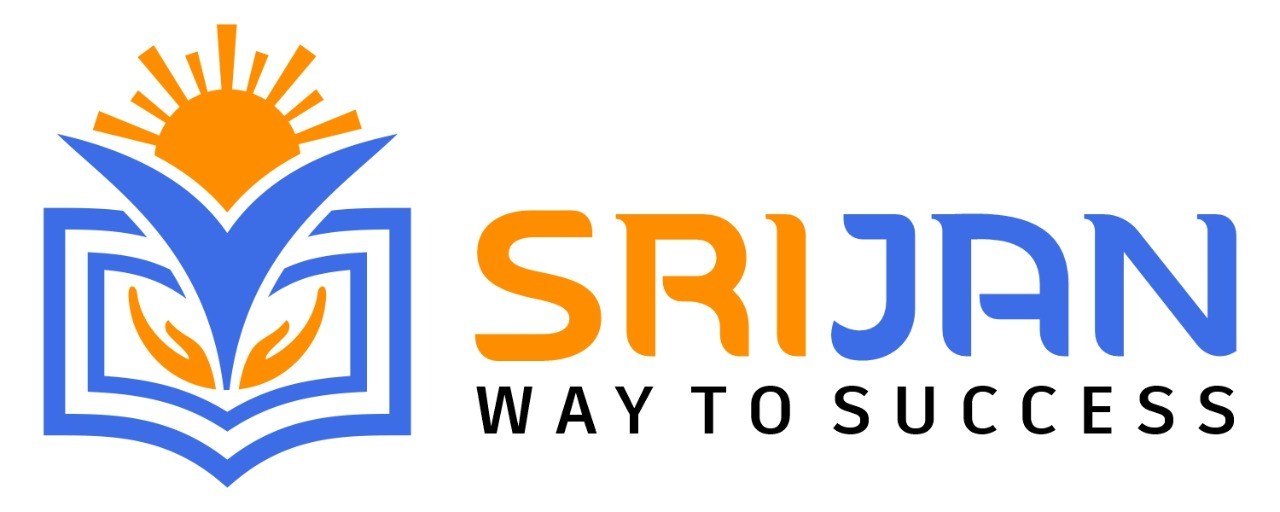SAP SOA Training || SAP SOA certification Training || SAP SOA Online training || SAP SOA self-paced training || SAP SOA Instructor-Led training
Key Features of Training:
- 35+ Hrs Instructor-led Training
- Mock Interview Session
- Project Work & Exercises
- Flexible Schedule
- 24 x 7 Lifetime Support & Access
- Certification and Job Assistance
SAP SOA (Service Oriented Architecture):
SAP SOA (Service Oriented Architecture) is a flexible and modular framework that facilitates seamless integration and interoperability of different software applications within an enterprise. It enables businesses to create and organize services as building blocks, making it easier to develop, deploy, and manage applications that communicate effectively across diverse systems. SAP SOA promotes reusability, allowing services to be shared and reused across various processes and applications. This architecture simplifies complex IT landscapes, enhances agility, and supports the efficient adaptation of business processes. By providing standardized communication methods and well-defined interfaces, SAP SOA enables businesses to respond more effectively to changing requirements and technology advancements, ultimately fostering innovation and improved collaboration throughout an organization.
Prerequisites: Who can attend SAP SOA Training?
- Basic Technical Knowledge
- Familiarity with SAP
- Web Services Understanding
- Development Experience
- Business Process Knowledge
- Database Concepts
- Good Communication Skills
Responsibilities of SAP SOA Consultant:
- Requirements Gathering
- Solution Design
- Integration Planning
- Service Development
- Service Lifecycle Management
- Middleware Configuration
Course Benefits:
- Job opportunities
- Promotion opportunities (Salary Hike)
- Increased productivity
- Improved decision-making
- Gain in-demand skills
What is future of SAP SOA Consultant?
- Integration of Cloud Services
- Hybrid Integrations
- API Management
- IoT Integration
- Microservices Architecture
- Advanced Analytics
The fee for SAP SOA (Service Oriented Architecture) training can vary depending on several factors such as the location, duration of the course, training format, and level of expertise. SAP offers various training options for SOA, including instructor-led courses, e-learning courses, and virtual live classrooms.
For More details you can Register
SAP SOA (Service Oriented Architecture) Certification FAQ's:
1. What is SAP SOA Certification?
A: SAP SOA Certification is a credential that validates an individual's expertise in understanding and implementing Service Oriented Architecture principles within the SAP environment. It demonstrates proficiency in designing and implementing integrated, modular, and scalable solutions using SOA concepts.
2. Why should I consider pursuing SAP SOA Certification?
A: SAP SOA Certification can enhance your career by showcasing your ability to design and implement effective integration solutions using SOA principles. It can open up job opportunities as an integration consultant, architect, or developer, and demonstrate your commitment to staying up-to-date with industry best practices.
3. What are the prerequisites for SAP SOA Certification?
A: Prerequisites for SAP SOA Certification can vary, but having a foundational understanding of SAP technologies, integration concepts, and programming principles can be beneficial. Review the specific prerequisites provided by SAP for the certification you're interested in.
4. What are the different levels of SAP SOA Certification?
A: SAP typically offers different levels of certification, such as Associate and Professional, depending on the complexity and depth of knowledge required. The specific levels and designations might change over time, so refer to the official SAP certification website for the latest information.
5. How can I prepare for the SAP SOA Certification exam?
A: SAP provides official study materials, guides, and sample questions on their certification website. Consider enrolling in training courses offered by SAP or authorized training partners. Practical experience in implementing SAP SOA solutions is also valuable.
6. How do I register for the SAP SOA Certification exam?
A: You can register for the certification exam through the SAP Training and Certification Shop. Exam fees, registration process, and available exam centers may vary based on your location and the specific certification you're pursuing.
7. What is the format of the SAP SOA Certification exam?
A: SAP certification exams generally consist of multiple-choice questions, scenario-based questions, and hands-on exercises (where applicable). The exam duration and passing score can vary based on the certification level.
8. How long is SAP SOA Certification valid for?
A: SAP certifications are typically valid for two years. To maintain your certification, you may need to participate in continuous learning activities and pass periodic delta exams to stay updated with the latest SAP updates and features.
9. How does SAP SOA Certification benefit my career?
A: SAP SOA Certification can enhance your credibility and job prospects as an integration professional. It demonstrates your expertise in designing and implementing effective integration solutions using SOA principles, making you a valuable asset to organizations.
10. Where can I find more information about SAP SOA Certification?
A: For the most up-to-date and detailed information about SAP SOA Certification, including prerequisites, exam details, study materials, and registration, visit the official SAP Training and Certification website.
SAP SOA (Service Oriented Architecture) Certification:
SAP SOA (Service Oriented Architecture) Certification is a prestigious credential offered by SAP that validates an individual's expertise in designing and implementing integration solutions using SOA principles within the SAP environment. This certification demonstrates proficiency in creating modular, scalable, and flexible architectures to facilitate seamless communication and data exchange between different software systems and services.
Key Points to Know About SAP SOA Certification:
Certification Levels: SAP offers certification at various levels, typically including Associate and Professional levels, depending on the complexity and depth of knowledge required.
Prerequisites: While prerequisites can vary, having a foundational understanding of SAP technologies, integration concepts, programming, and basic architecture principles is often recommended.
Exam Format: The certification exam generally includes a combination of multiple-choice questions, scenario-based questions, and potentially hands-on exercises to assess both theoretical understanding and practical application.
Preparation: SAP provides official study materials, guides, and sample questions on their official certification website. Enrolling in training courses provided by SAP or authorized training partners is recommended.
Registration: You can register for the certification exam through the SAP Training and Certification Shop. Exam fees, registration process, and available exam centers may vary based on your location and the specific certification level.
Validity: SAP certifications are typically valid for two years. To maintain your certification, you may need to participate in continuous learning activities and pass periodic delta exams to stay updated with the latest SAP updates and features.
Benefits: SAP SOA Certification can enhance your career prospects by showcasing your ability to design and implement effective integration solutions using SOA principles. It can lead to job opportunities as an integration consultant, architect, developer, and more.
SAP Training and Certification Website: For the most accurate and up-to-date information about SAP SOA Certification, including prerequisites, exam details, study materials, and registration, visit the official SAP Training and Certification website.
SAP SOA (Service Oriented Architecture) Curriculum:
1. Introduction to SAP SOA:
- Understanding the concept of Service Oriented Architecture (SOA)
- Benefits and significance of SOA in modern enterprise architecture
2. SAP Integration Technologies:
- Overview of SAP integration tools and platforms
- Comparison of different integration approaches (IDoc, RFC, SOAP, REST, etc.)
3. Principles of Service Design:
- Designing services for reusability and modularity
- Defining service interfaces, operations, and data structures
4. Integration Patterns and Best Practices:
- Common integration patterns (request-reply, publish-subscribe, etc.)
- Best practices for implementing robust and scalable integrations
5. SAP Process Orchestration (PO) Overview:
- Introduction to SAP Process Orchestration as an integration platform
- Overview of components: Process Integration (PI), Business Process Management (BPM), and more
6. Service Development and Implementation:
- Creating web services and APIs using SAP PO
- Service implementation and exposure in the SAP landscape
7. Message Transformation and Mapping:
- Transformation of data between different formats (XML, JSON, etc.)
- Developing mapping logic using graphical tools and scripting
8. Process Orchestration and Workflow:
- Creating and modeling business processes in SAP BPM
- Implementing process orchestration and workflow automation
9. Monitoring and Error Handling:
- Monitoring integration flows and processes for performance and errors
- Configuring error handling and exception handling mechanisms
SAP SOA (Service Oriented Architecture) Interview Questions and Answers:
1. What is Service Oriented Architecture (SOA)?
A: SOA is an architectural approach that structures software systems into modular, reusable services that communicate over well-defined interfaces, promoting flexibility and interoperability.
2. How does SOA differ from traditional monolithic architectures?
A: SOA emphasizes the creation of loosely coupled, interoperable services that can be independently developed, deployed, and maintained, promoting better scalability and agility compared to monolithic architectures.
3. What is a service in the context of SOA?
A: A service is a self-contained unit of functionality that exposes its capabilities through a standardized interface, allowing other systems to consume its functionality.
4. Explain the concept of service contract in SOA.
A: A service contract defines the interface, operations, and data formats that a service exposes. It serves as an agreement between the service provider and consumers on how the service will be used.
5. How does SOA promote reusability?
A: SOA encourages the creation of modular services that can be reused across different applications and processes, reducing development effort and improving consistency.
6. What are the key benefits of implementing SOA in an organization?
A: Benefits include enhanced interoperability, scalability, flexibility, and the ability to respond quickly to changing business needs by composing services into new applications.
7. How does ESB (Enterprise Service Bus) contribute to SOA?
A: An ESB is a middleware component that facilitates communication and interaction between services, handling routing, transformation, and protocol conversion.
8. Explain the difference between SOAP and REST in SOA.
A: SOAP (Simple Object Access Protocol) is a protocol for exchanging structured information in XML format, while REST (Representational State Transfer) is an architectural style that uses HTTP methods for communication.
9. What is orchestration in the context of SOA?
A: Orchestration involves coordinating the execution of multiple services to achieve a specific business process, often involving a centralized controller.
10. Describe the concept of choreography in SOA.
A: Choreography focuses on the interaction and communication between services to achieve a business process. It defines the sequence of events without a centralized controller.
11. How can you ensure data consistency in distributed SOA environments?
A: By using techniques like two-phase commit, compensating transactions, and maintaining proper error-handling mechanisms.
12. What is WS-Security, and why is it important in SOA?
A: WS-Security is a standard for securing SOAP messages in web services. It ensures confidentiality, integrity, and authentication of data exchanged between services.
13. How does caching impact the performance of SOA applications?
A: Caching can improve performance by reducing the need for repeated service invocations and minimizing data retrieval from remote sources.
14. Explain the concept of loose coupling in SOA.
A: Loose coupling refers to the minimal dependency between services. Changes in one service do not affect other services as long as the service contract remains intact.
15. How can you handle versioning of services in SOA?
A: By carefully designing service contracts, using backward-compatible changes, and maintaining multiple versions of services to support different consumers.
16. What is the role of WSDL (Web Services Description Language) in SOA?
A: WSDL is an XML-based language used to describe the interface, operations, and data types of a web service, enabling seamless integration between services.
17. How can you handle service discovery in a dynamic SOA environment?
A: Service discovery can be achieved using UDDI (Universal Description, Discovery, and Integration) registries or through more modern approaches like service meshes.
18. What challenges might arise in security when implementing SOA?
A: Challenges include data privacy, identity management, ensuring secure communication between services, and preventing unauthorized access.
19. Explain the concept of federated SOA governance.
A: Federated SOA governance involves multiple organizations collaborating to define and enforce service standards, policies, and best practices.
20. How do you design fault-tolerant SOA applications?
A: By implementing retry mechanisms, using compensating transactions, and designing services to gracefully handle failures.
21. What is a contract-first approach in SOA?
A: In a contract-first approach, the service contract (WSDL or API specification) is designed before any implementation code, ensuring a clear and agreed-upon interface.
22. How does the microservices architecture relate to SOA?
A: Microservices is an architectural style inspired by SOA, where applications are built as a collection of small, loosely coupled services that communicate through APIs.
23. What are some tools commonly used for implementing and managing SOA?
A: Tools like SAP Process Orchestration, MuleSoft Anypoint Platform, Apache Camel, and IBM Integration Bus are commonly used for implementing and managing SOA.
24. How can you ensure scalability in a SOA environment?
A: By designing services that can be horizontally scaled, distributing workloads efficiently, and using load balancers and clustering.
25. Explain the concept of service virtualization in SOA.
A: Service virtualization simulates the behavior of services that are not yet developed or are difficult to access, allowing developers to test and integrate without dependencies.
26. What role does XML play in SOA?
A: XML (extensible Markup Language) is commonly used for structuring and exchanging data between services due to its flexibility and compatibility.
27. What is API governance, and why is it important in SOA?
A: API governance involves defining and enforcing policies, guidelines, and standards for APIs to ensure consistency, security, and proper usage.
28. How do you ensure end-to-end monitoring and visibility in a SOA environment?
A: By implementing monitoring tools that track the health, performance, and availability of services throughout the entire integration flow.
29. Can you explain the concept of data transformation in SOA?
A: Data transformation involves converting data from one format to another to ensure compatibility between services with different data requirements.
30. What are the key considerations when choosing between SOAP and REST for SOA implementations?
A: Consider factors such as the complexity of the integration, security requirements, performance considerations, and the existing technology stack.
Participants will have 24/7 access to our online lab, providing hands-on experience with SAP SOA tools and scenarios.
This includes server access to S/4 HANA 2023 for 1 year, ensuring you have ample time to practice and apply your skills in a real-world environment.
With this extended access, you can work on projects, explore advanced features, and solidify your understanding of SAP SOA in the latest SAP S/4 HANA version.















